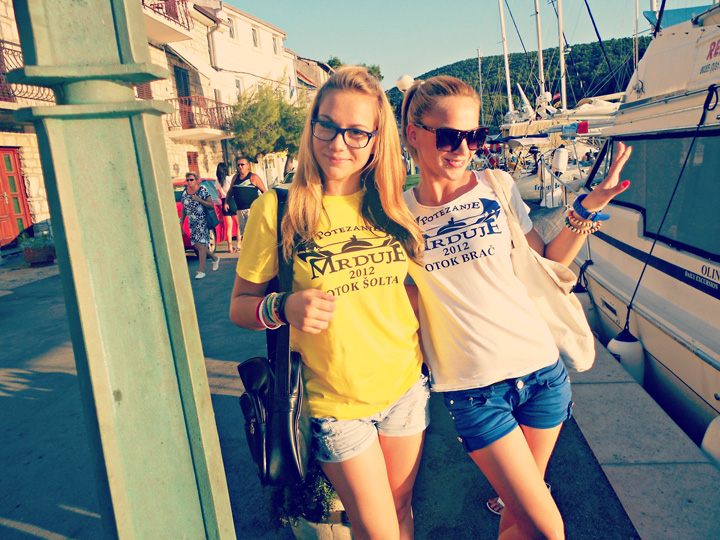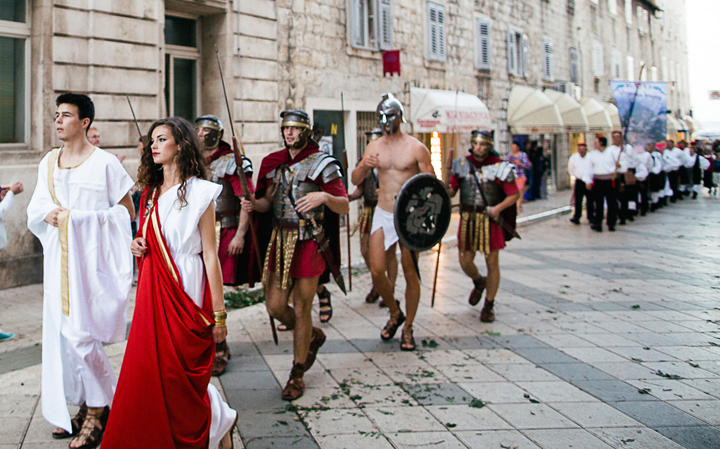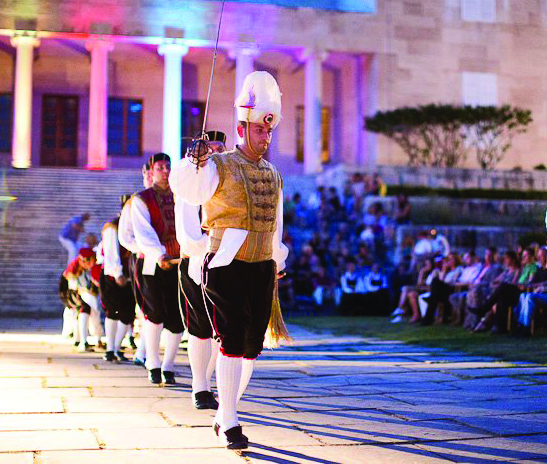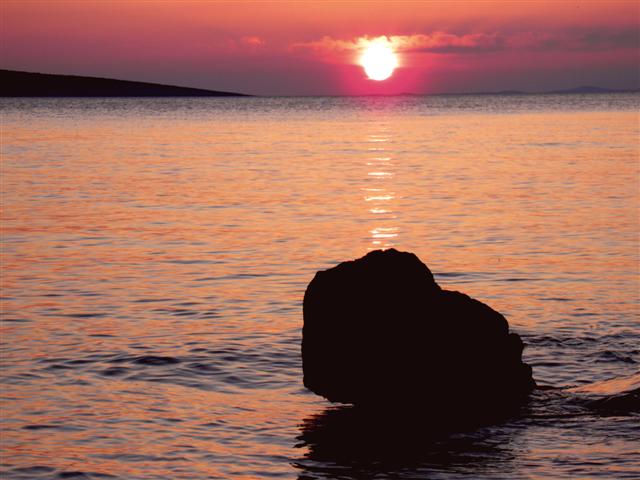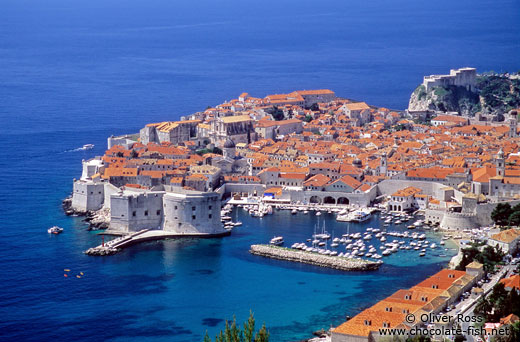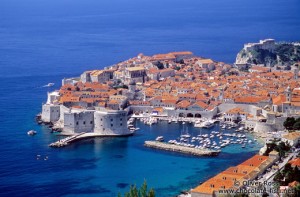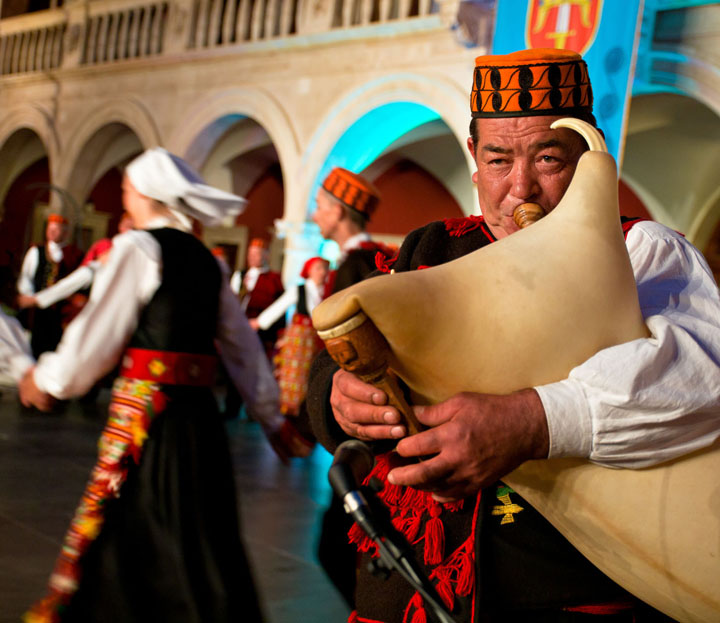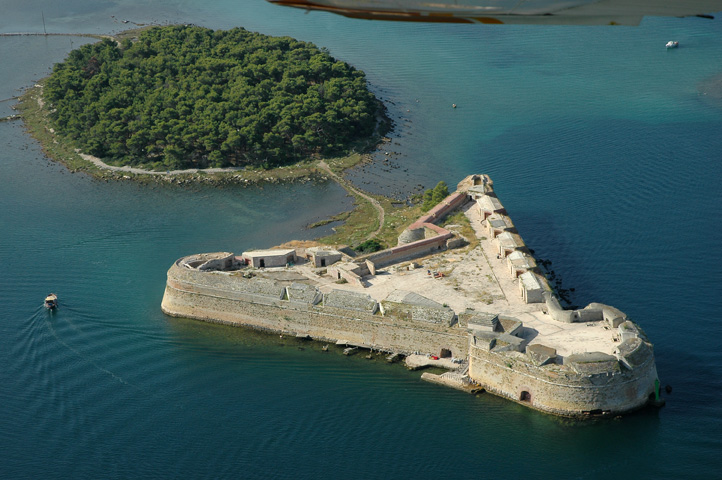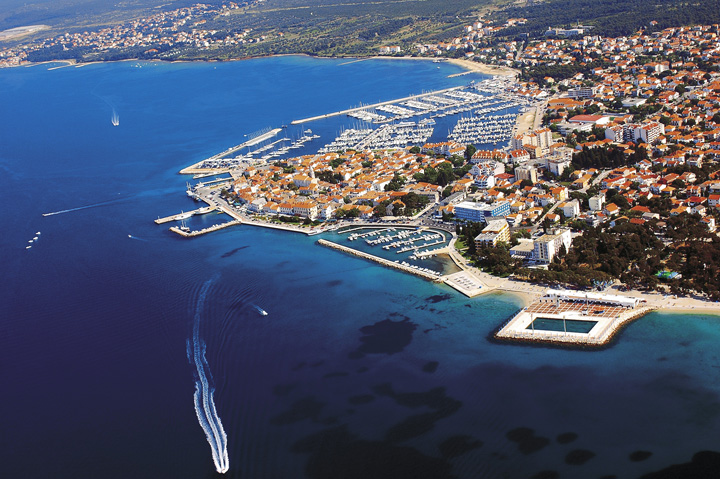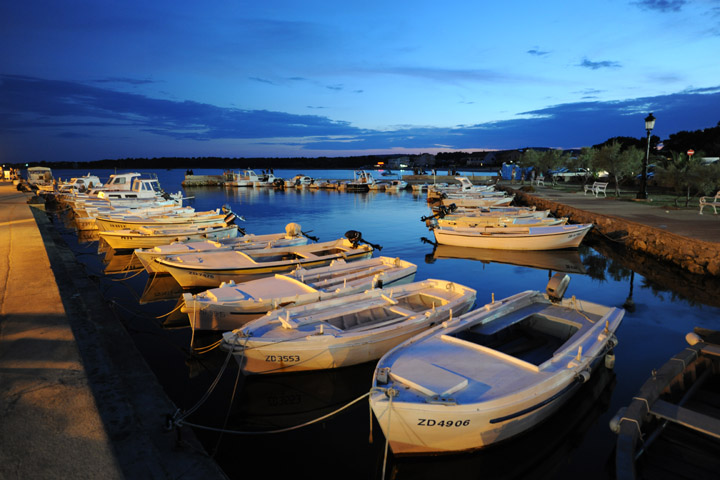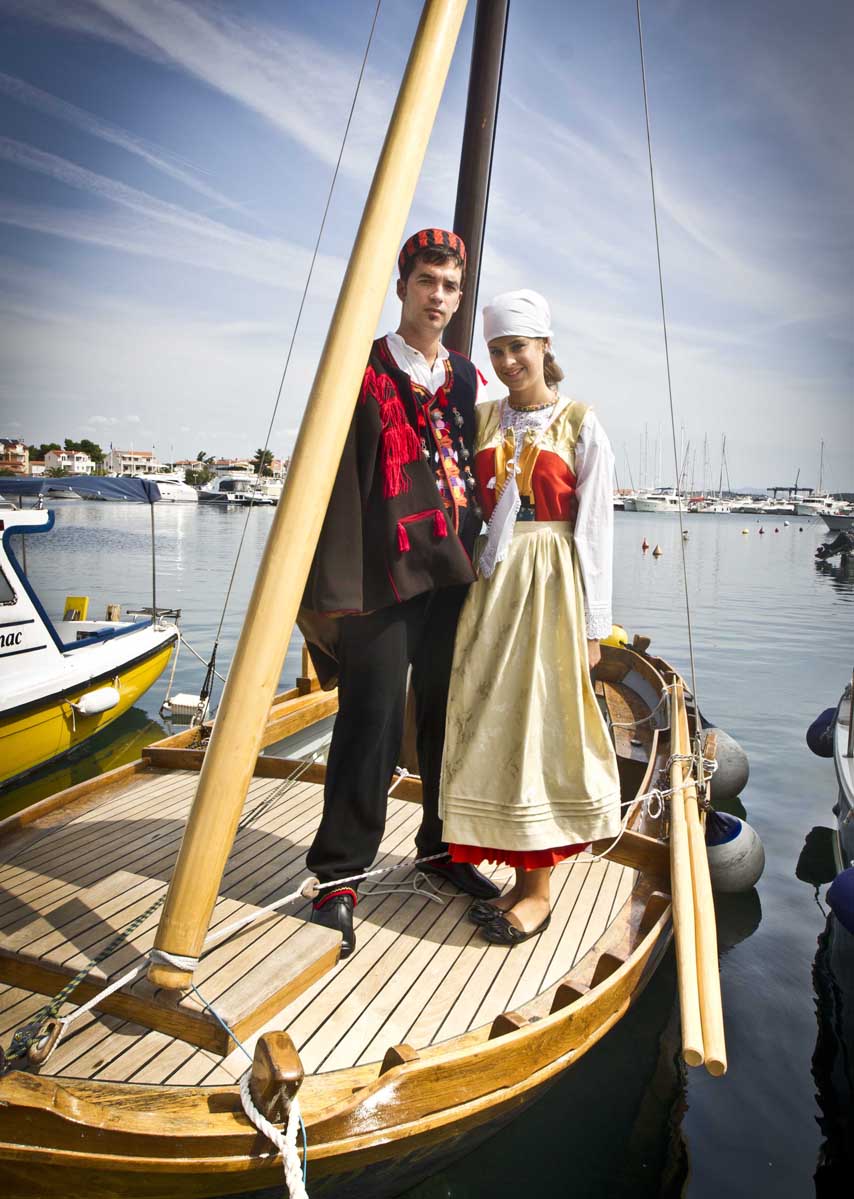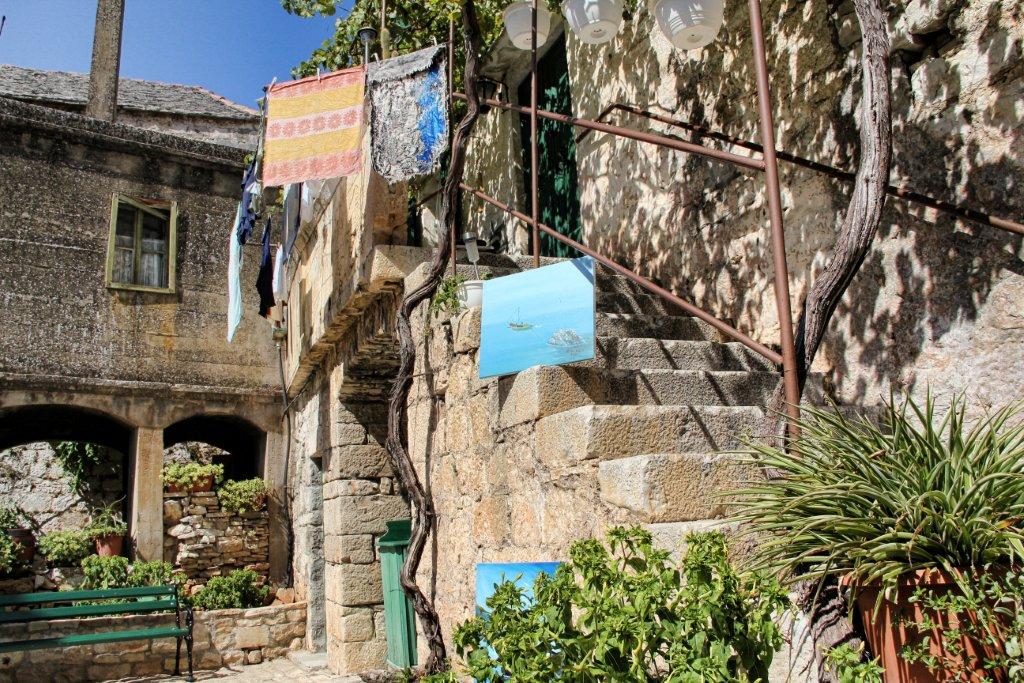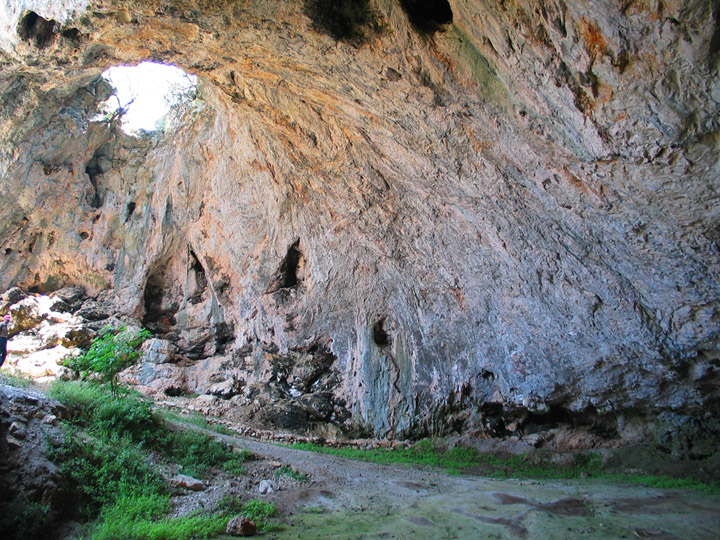It is time to discover Brač
[nivo effect="fade" directionNav="button" controlNav="true" width="620 px" height="360 px"]
[image]http://hotspots.net.hr/wp-content/uploads/2013/10/Bol-franjevacki-samostan.jpg[/image]
[image]http://hotspots.net.hr/wp-content/uploads/2013/10/lozisca.jpg[/image]
[image]http://hotspots.net.hr/wp-content/uploads/2013/10/Mala-noćna-regata.jpg[/image]
[image]http://hotspots.net.hr/wp-content/uploads/2013/10/Potezanje-Mrduje.jpg[/image]
[image]http://hotspots.net.hr/wp-content/uploads/2013/10/Pustinja-Blaca.jpg[/image]
[image]http://hotspots.net.hr/wp-content/uploads/2013/10/SP2_5148.jpg[/image]
[/nivo]
There can be few islands in the world which can combine such an enviable offer of adrenaline sports, gastronomy, thousands of years of heritage, the finest beaches…
Treat yourself with the most memorable vacation and set off to discover numerous beauties, opportunities this island has to offer.
Its stone adorns major buildings around the world, such as White House in Washington, the Liverpool Cathedral, the Hungarian parliament in Budapest, but the island of Brač has plenty of other attractions to entice visitors to Central Dalmatia’s largest island. Conveniently located just an hour from Split (and with other connections from the mainland and Hvar), Brač has also managed to successfully brand itself as the island of culture and adventure.
Rich history of the island left numerous cultural monuments which depict ancient times with their complexion and ambience. Also, diverse and dynamic nature sculptured many rocks and treaded the paths on which you can free your adventurous spirit.
From gorgeous rocky and ancient ambience of the Blaca desert to the Zlatni rat where you can give yourself to the winds to carry you into the azure of the sea and the sky, you will definitely be breath taken, due to either adrenalin rush or the magnificent cultural heritage.
SUPETAR
Our journey will start at the main town of Supetar, whose regular car ferries provide the most accessible arrival point from Split to any of the island. Supetar has numerous events, cultural monuments and sports facilities, which make it an optimal choice for cultural tourism and active recreation. Admirers of sculpture should head for the gallery of Ivan Rendić, one of the island’s most famous sons. The gallery houses a collection of busts and drawing from the leading Croatian sculptor’s work, as well as interesting items such as a letter of thanks from British Prime Minister Gladstone. Top of the list of places to visit is Blaca desert, monumental hermit convent from 16thcentury, that will amaze you with its rocky complexions. These buildings look as if they emerge from the great rock behind them that dominates the landscape. Island of Brač’s Museum in Škrip, is festival the the island’s oldest and most authentic village. The museum showcases a cross section of the island’s history and cultural heritage, and rumour has it that Diocletian’s wife and daughter are buried in the Roman mausoleum. Be there on August 18 for the Škrip fair.
Read more about Supetar

SUTIVAN
Brač’s claim as an island of adventure includes the fabulous Vanka Regule, which this year takes place from July 14-21. Not quite an Olympics (but very close), the town of Sutivan hosts
this popular outdoor adventure sport and film festival, with competitors facing challenges in climbing, biking, sailing, slacklining, kayaking, hiking and stand-up paddling.
The historic core of Sutivan is a place of exceptional cultural value, and is protected by state laws as a cultural monument. However, not only lovers of history will come into their own in Sutivan
– for fans of active holidays, there is a Nature Park, an extraordinary resort and a place for rest and entertainment.
Read more about Sutivan
MILNA
With its deep and picturesque bay, Milna has been harbouring sailors since the times of emperor Diocletian, and the town’s ACI marina is an important stop on the Adriatic sailing route. Milna is a sailing paradise, and there are plenty of sailing-related activities to enjoy, of which the most intriguing is Potezanje Mrduje, where the residents of Brač and neighbouring Šolta perform the annual tug-of-war to determine the ownership of the tiny island of Mrduja, which lies between them. This year’s event is on 27 July with a concert of the Croatian music bend Macaklin and
famous singer Dražen Zečić.
BOL
The most iconic picture of the island is of course the unique beach of Zlatni Rat, the most eye- catching attraction of the southern town of Bol, which is connected by catamaran to Split and Jelsa on Hvar. Much more than a beach resort, Bol has become a top water sports destination, and offers some of the best windsurfing in Croatia. There is great diving, and it is one of the few places
in the country where one can indulge in kite boarding, and the Bol Tennis Open has attracted some big names in the past. Its cultural must sees include the stunning 15th Century Dominican monastery, while wine lovers have a wealth of choice when investigating the island’s wines, and a visit to vinoteka Jako vina is recommended. Bol has a lively summer cultural programme, including Bol Summer Night and great concerts at the monastery.
For those who care about culture and adventure, a must visit monument is Zmajeva spilja ( The Dragon’s cave), located near village of Murvica, about seven kilometers from Bol. It is called The
Dragon’s cave because of the relief of dragon in it. It was a temple and dwelling of the glagolitic priests. Reliefs in this cave are monument to the monastic life of the Glagolitic friars in the 15th century.
Read more about Bol
SELCA
Eastern port, a quiet fishing village of Sumartin, is connected by a new nautical bridge with regular ferry lines from Makarska and opens the doors to some of the island’s most
important cultural treasures. More than 10 monuments of historical figures adorn Selca, the only stone-carving place that is entirely built of white stone from Brač. Visit the first monument to Tolstoy in the world from 1911, or parish church which is because of its monumentality and beauty called the Brač Cathedral. Povlja were recently ranked as one of the 10 most beautiful places
in Croatia by Global Grashopper.
Read more about Selca
POSTIRA
Postira on the northern coast is also a place of history and tradition. Take the short road inland to the eco-ethno village of Dol, home to the unique gastronomic treasure called vitalac. Postira itself is home to the island’s first sardine factory, employing some 300 people and provide the highest quality to the restaurants of the island. Its heritage can be traced by the various archaeological remains, including a Roman villa rustica, a Benedictine convent and the early Christian basilica of St Lawrence. Film lovers should visit the 3rd Postira Seaside Film Festival on
August 1 -3.
Read more about Postira
An island of culture and adventure then, but also one of fabulous beaches and gastronomy, of nature and vistas. There can be few islands in the world which can combine such an enviable
offer of adrenaline sports, thousands of years of heritage, the finest beaches in one of the world’s cleanest seas, and all this just a one hour ferry ride from the Dalmatian capital of Split, which is served by 80 destinations this summer.
It is time to discover Brač!
Traces of Dalmatian past
[nivo effect="fade" directionNav="button" width="720 px" height="400 px"]
[image]http://hotspots.net.hr/wp-content/uploads/2013/06/studiopapaja_hotspots_016.jpg[/image]
[image]http://hotspots.net.hr/wp-content/uploads/2013/06/studiopapaja_hotspots_015.jpg[/image]
[image]http://hotspots.net.hr/wp-content/uploads/2013/06/studiopapaja_hotspots_014.jpg[/image]
[image]http://hotspots.net.hr/wp-content/uploads/2013/06/studiopapaja_hotspots_010.jpg[/image]
[image]http://hotspots.net.hr/wp-content/uploads/2013/06/studiopapaja_hotspots_009.jpg[/image]
[image]http://hotspots.net.hr/wp-content/uploads/2013/06/studiopapaja_hotspots_007.jpg[/image]
[image]http://hotspots.net.hr/wp-content/uploads/2013/06/studiopapaja_hotspots_006.jpg[/image]
[image]http://hotspots.net.hr/wp-content/uploads/2013/06/studiopapaja_hotspots_004.jpg[/image]
[image]http://hotspots.net.hr/wp-content/uploads/2013/06/studiopapaja_hotspots_003.jpg[/image]
[image]http://hotspots.net.hr/wp-content/uploads/2013/06/KUD-Vrgoračka-krajina1.jpg[/image]
[image]http://hotspots.net.hr/wp-content/uploads/2013/06/BCP_4946.jpg[/image]
[/nivo]
DALMATIA FROM ANTIQUE TO THE PRESENT
Despite the bad weather, which surprised many Split residents and their guests, on the 7th of June, on Prokurative square, cultural manifestation ''Traces of Dalmatian Past – Dalmatia from antique to the present'' was held.
In this extraordinary ambience of one of the most beautiful squares in Croatia, for a moment we were taken back to the past to experience sounds, tastes, scents and spirits of days of yore.
The audience, that included deputy prefect of Splitsko- Dalmatinska County Ante Šošić, County’s tourist association director Joško Stella and counsellor of ministry of tourism Ivo Bašić, had a chance to enjoy in rich entertaining programme.
The program included 7 short performances of cultural-historical character which showed the most exciting events from Dalmatia's history and culture, including those of its islands, coast and Dalmatinska Zagora.
The manifestation was organized by Dalmatian Hot Spots magazine and Dalmatia Event association.
It started with procession of all performers which was followed by pleasantly surprised tourists.
Each group of performers set a stand where they presented old crafts and manufacturers from their hometowns.
Folklore association Kumpanija from Vela Luka was first to perform its famous knight's dance called Ples od boja. It is an old sword dance performed in a memory of defeat of Turkish conquerors by national guard of Korčula.
To the utmost joy of the audience, Emperor Diocletian also appeared with his wife Priska, his army and gladiators. This performance showed the life of Diocletian and gladiator fights in a comic way, while specially interesting were authentic costumes of all performers, from military armours to Diocletian's luxury cloak.
During their short performance, Amateur Theatre of Sinj showed famous defence of city of Sinj from Turkish invaders, putting the special emphasis on legend by which Mother of Mercy played a key role in this great defence.
Historic military unit Kliški Uskoci took us back to 1537 and showed a part of the Battle of Klis between Turks and Klis people.
Old crafts and customs of Dalmatinska Zagora were shown by members of cultural and art society Vrgoračka krajina. They had a really strong performance that included ojkanje – a special way of singing that comes from Dalmatinska Zagora which was included in UNESCO list of endangered non-material heritage in 2010.
Amateur Theatre of Šolta performed a short play about the eternal rivalry between Brač and Šolta people over the property of small island of Mrduja. Their performance included famous Mrduja pulling – a contest where two teams struggle to pull the islet with ropes as close to their own island.
This project presented tourist offer of Splitsko-Dalmatinska County. By staging tales and legends from its history great actors and excellent scenery took the audience back to the moments of mysterious past, while the dance and good music ensured entertainment almost to the morning hours.
A glimpse into the history of Dalmatia
SPLIT, Prokurative, 7 June 2013, beginning at 19:30
In the extraordinary surroundings of one of the most beautiful Croatian squares – Prokurative, in one of the most attractive Croatian destinations, in Split, for a moment we will take you back to the past, where you will experience the sounds, tastes and aromas, music and spirit of the bygone times.
Calendar of events
Cultural programme
The event begins with the alignment of all participants (over 250 participants in traditional costumes) and then the procession which starts from the understructures of the Diocletian's palace and goes to Prokurative. Each group represents a certain historical period of Dalmatia and will be positioned on the scheduled area on the Prokurative. Stands with authentic manufactured products and presentations of old crafts will be beside each group of performers.
Antique workshops
Throughout the day, visitors will be able to enjoy and participate in the making of ancient mosaics, ancient pottery, ancient hairstyles and creams for women.
Fair/Exhibition of original products and old crafts
Small manufacturers will exhibit their products - souvenirs, handicrafts, traditional and organic products on the stalls. In this way they are promoting their products, which are made thanks to their skills, knowledge, but also humility, and this event is helping them to find their way to the consumers.
Objective of the event
The aim of this event is to promote authentic Croatian products and cultural tourism as a special form of tourism.
6 Traditional and cultural-historical stories
This project consists of six historic-cultural experiences, condensed in 90 minutes.
The narrator follows the whole manifestation – he tells a short story in Croatian and English language before every performance.
1. THE ARRIVAL OF THE EMPEROR DIOCLETIAN
Dioklecijanova legija (Diocletian's Legion) is an association which promotes ancient cultural heritage with special emphasis on Roman culture. In their performance, Diocletian's legion will show us how the emperor Diocletian lived, how he travelled, who was his beloved. They will also perform gladiator fights which will take us back to 3rd century AD. Soldiers will be clad in authentic armor from Roman times, while the emperor will be dressed in luxurious robes.
Performers: Association of Diocletian legions Split (Udruga Dioklecijanova legija Split)
2. THE SIEGE OF SINJ
Sinj Amateur Theater will stage a short summary of events which preceded the glorious victory over the Ottomans on 15 August 1715.
40 000 of Ottoman soldiers led by Mehmed Pasha Ćelić wanted to conquer the Cetina Valley and to seize the town of Sinj. However, the people of Sinj, led by Father Ivan Grčić, rejected an ultimatum only 700 people defended the town. During the seven-day siege, the defenders had put up a strong resistance, praying to the Mother of Mercy, the Miraculous Madonna of Sinj and they have defeated the Ottomans. Having been once and for all defeated, the Ottomans finally left Sinj and the Cetinska Krajina Region at dawn on 15 August.
Performers: Amateur Theater of Sinj (Sinjsko amatersko kazalište)
3. USKOKS' BATTLE FOR KLIS, ”Days of Petar Kružić, Captain and Prince of Klis 2012”
Historical units of Klis' uskoks will take us back to 1537 and show us a part of the historic battle between the inhabitants of Klis and the Ottoman army.
Croatian captain Petar Kružić led the defense of the fortress against the Turkish invasion and siege that lasted for more than two and a half decades. During this defense, as Kružić and his soldiers fought without allies against the Turks, the military faction of Uskoks was formed, which later became famous as an elite Croatian militant sect. Ultimately, the defenders were defeated and the fortress was occupied by the Ottomans in 1537.
Performers: Historical Unit Kliški uskoci (Povijesna postrojba Kliški uskoci)
4. Presentation of old customs and crafts of Dalmatinska zagora (Vrgorac region)
Members of the Vrgorac Region Cultural Arts Society will show the customs and old crafts of Dalmatinska zagora. In this performance you can hear ojkavica, ganga, šijavica. In front of numerous audience they will be cutting Dalmatian dry-cured ham, drink from a jug and singing.
Performers: Vrgorac Region Cultural Arts Society (KUD Vrgoračka krajina)
*Ganga is a type of singing from rural Croatia and Bosnia and Herzegovina. It is characterized by a lone singer singing one line of lyrics and then others joining in for what can be best described as a wail. It is under the protection of the Croatian Ministry of Culture.
*Ojkanje is a tradition of polyphonic folk singing from the Dalmatian hinterland region, marked by a distinctive voice-shaking technique. In 2010 it has been inscribed in UNESCO's List of Intangible Cultural Heritage in need of Urgent Safeguarding
*Šijavica is a hand game dating back thousands of years to ancient Roman and Greek times. It can be played to decide issues, much as two people might toss a coin, or for entertainment.
5. MRDUJA
Sulet Amateur theater from the island of Šolta will perform a small play about the eternal rivalry between inhabitants of the islands of Brač and Šolta entitled "Whose is Mrduja island".
According to the legend, the inhabitants of Brač and those of Šolta wrangled over whom the island belonged to so they used a rope in an attempt to pull it from one side of the Split Channel to the other. The people of Brač won the tug of war so the island is nearer to Brač than to Šolta.
Thanks to Mrduja, which has become a traditional feast between Brač and Šolta, these two islands became twinned and Mrduja had linked them in a cultural - entertaining way.
Performers: Šoltanska amateur theater Sulet
6. SUPETAR CULTURAL POSTCARD
Amateur Theatre "Bracera - Supetar" will stage a segment from the show "Mister Keko" by the legendary chakavian poet from Brač island, Stephen Stef Pulišelić. The performance of this theater group will be accompanied by the tune "Ti Gariful" by klapa "Pupe" Supetar and Brač folk group "Ciciljona" Supetar will perform Brač Quadrille or šotiš dance.
Performers: Amateur theater "Bracera - Supetar", Klapa "Pupe" Supetar, folk group "Ciciljona" Supetar
Fair of local authentic Croatian products
With Croatia's preparations for joining the European Union, our exhibitors got to know how to
draw attention of the public. With these joint actions and common market placements they are adapting themselves to EU standards more quickly.
Their products are made with great skill, knowledge, but also humility in small crafts, co-operatives, family business and small businesses. This project seeks to inform the public of the existence of hard-working people who manufacture organic products, souvenirs, handicrafts, traditional products, so that such products could find their way to the consumers.
At the same time we would like to emphasize the need to preserve old, local/original Croatian crafts which are on the brink of extinction, so that the knowledge and skills that our small craftsmen-entrepreneurs have can be transferred to future generations.
Organizer of the event:
Dalmatian Hot Spots Magazine & Dalmatia Event Association
Dalmatian Hot Spots Magazine is a magazine which promotes tourism, Dalmatian culture and cuisine and Croatian manufacturers. It also organizes numerous tourist events and fairs. It is published in 15,000 copies in English and Croatian and distributed to over 500 locations – you can find it in all tourist offices in Dalmatia, nautical ports, catering industry, apartments, hotels, hostels, via business entities, representative offices of Croatian National Tourist Board and embassies. We are also present at international tourism fairs.
The magazine is published with the support of the Croatian Ministry of Tourism, Split-Dalmatia County, Sibenik-Knin County, Dubrovnik-Neretva County, Split-Dalmatia County Tourist Board, Dubrovnik and Neretva County Tourist Board, Sibenik-Knin County Tourist Board, Ministry of Entrepreneurship and Crafts.
Dalmatia Event Association promotes Dalmatian culture and tradition, and organizes numerous fairs and events. The Association encourages small manufacturers to exhibit their products at the Eco-Ethno fairs and festivals which are organized independently by Dalmatia Event Association, or in collaboration with other similar associations. We also promote small businesses with the project of representing small-scale producers in Dalmatian hot spots magazine.
PURPOSE OF THE EVENT
This event enriches the cultural tourism offer of Split-Dalmatia County, with the revival of the historical and traditional events through staged historical narratives, battles and legends.
These moments of mystical history, with top actors and superb scenery, will be accompanied with a lot of entertainment, dancing and many surprises …
Be our guests and experience Dalmatia! :)
Dalmatian hot spots magazin
Udruga Dalmatia Event
Gundulićeva 26, 21000 Split, OIB 50317047111
hotspots.net.hr
[email protected]
[nivo effect="fade" directionNav="button" width="720 px" height="360 px"]
[image]http://hotspots.net.hr/wp-content/uploads/2013/06/Kud-vrgoračka-krajina-ples.jpg[/image]
[image]http://hotspots.net.hr/wp-content/uploads/2013/06/KUD-Vrgoračka-krajina.jpg[/image]
[image]http://hotspots.net.hr/wp-content/uploads/2013/06/KUD-Vrgoračka-krajina.jpg[/image]
[image]http://hotspots.net.hr/wp-content/uploads/2013/06/Kumpanija.jpg[/image]
[/nivo]
Kolan - the heart of Pag island
At the very heart of the island, surrounded by peaceful pastures and ancient stone walls,
settles the village of Kolan. The hardworking, hospitable and open hearted villagers are
true masters of authentic local dishes like cheese, prosciutto and lamb, and the small
gourmet restaurants and taverns are a wonderful setting for trying them out, with a glass of
good wine.
Kolan has a cultural and historical heritage that it carefully preserves and proudly shows.
The Ethnographic museum exhibits a number of artifacts, each of which has a story to tell,
as well as photographs of the time when coal was transported to Italian towns from the
coal mines in the field of Kolan, the remains of which are still visible. The old wells and St.
Luka, St. Jeronim, St. Marija and St. Vid churches are also very interesting to see.
The nearby field of Kolan is extremely favorable for the cultivation of vines and olives,
while the stony landscape with aromatic herbs is perfect for the grazing of sheep which
leads to the production of the renown cheese of Pag.
Kolanjsko blato (Kolan muds) is an ornithological reservation with 163 bird species nesting
in the wetland habitat. The reservation is equipped for bird watching, with information
boards and walking and biking trails.
An ideal place for a quiet vacation is the Mandre settlement on the Kolan riviera; hidden in
the dense oak forest with a wonderful view of the nearby islets of Maun and Škrda with
their bays and gorgeous beaches. The promenade by the sea with a range of cafe bars
and taverns serving local foods, bowling, playgrounds and the hospitality of locals are
there for the memorable holiday of each visitor.
Kolanjski gajac is a modern tourist resort that became very attractive due to the proximity
of Novalja and Zrće beach. Its beautiful, sandy beaches St.Duh, Čista, Prnjica and Rogoze
offer clean sea and a view of the islands stony landscape. Katarelac beach near Zrće is for
those that enjoy activities-ski lift and entertainment.
Turistička Zajednica Općine Kolan
Trg kralja Tomislava
23251 Kolan, otok Pag
Turistički ured Kolan:
Tel/Fax: 00385 (0)23 698 290
Turistički ured Mandre:
Tel/Fax: 00385 (0)23 697 203
Turistički ured Kolanjski Gajac:
Tel/Fax: 00385 (0)53 684 107
URL: www.tzkolan-mandre.com
Email: [email protected]
.
.
[nivo effect="fade" directionNav="button" width="720 px" height="360 px"]
[image]http://hotspots.net.hr/wp-content/uploads/2013/04/vesna-karavanic-suton-u-mandrama.jpg[/image]
[image]http://hotspots.net.hr/wp-content/uploads/2013/04/mandre8_b.jpg[/image]
[image]http://hotspots.net.hr/wp-content/uploads/2013/04/KUDKolan2461.jpg[/image]
[image]http://hotspots.net.hr/wp-content/uploads/2013/04/kolanjskigajac4_b.jpg[/image]
[/nivo]
Privlaka - sandy rose on the coast of Zadar
The charming Dalmatian resort Privlaka is situated on a large and flat, sandy peninsula.
The place is known for the people who used to dig the sand from the sea -sabunjari. They
were the ones that built the white town of Zadar (a 15 minutes’ drive away) after World
War II. and have left a deep mark in the lives of the people of Privlaka.
The crystal sand is not just a symbol, but also the key attraction of this destination.
Beautiful beaches, combined with warm and clean sea, are the best invitation for tourists,
so Privlaka is often visited by families with children. Besides the family, it is also suitable
for medical tourism, since, apart from pure and fresh sea air, it boasts the healing black
mud of exceptional quality!
If you're a fan of cultural attractions, visit the Romanesque church of Sv. Vid from the 14th
century and the parish church of St.Mary-one of the finest examples of Neoclassical
architecture. In case you like active vacation, an attractive bike trail is available, while a
well equipped water sports center is right next to the Sabunike tourist resort.
Don’t miss out on the fun in Privlaka- the key event is the traditional festival called
"Privlačka Night" (4.08). Thanks to the entertaining cultural program that includes
performances by famous musicians and a rich tasting, it became recognizable in the wider
area of the county. If you like to take part in cultural events, visit the performances of KUD
"Privlaka" and "Libar" women’s choir. Experience a typical Dalmatian atmosphere in this
desert rose-like place, made from sand, smell of the sea and folk songs!
[nivo effect="fade" directionNav="button" width="720 px" height="360 px"]
[image]http://hotspots.net.hr/wp-content/uploads/2013/04/Privlaka.jpg[/image]
[image]http://hotspots.net.hr/wp-content/uploads/2013/04/Privlaka-2.jpg[/image]
[/nivo]
The World media love Dubrovnik
All through the year 2012 there have been numerous reports of Dubrovnik by the world media.
Web portals, printed magazines, TV stations from all over the world: the U.S.A, Brazil, Mexico, Great Britain, Germany, Switzerland, Spain, the Netherlands, Turkey and Japan have been reporting on all aspects of the Dubrovnik offer, as a quality tourist destination, recommending it to their readers as a desirable place to rest and stay, with a great offer of special programs. Most announcements have been published by the British media, which is evidence of the Dubrovnik popularity among British tourists.
In early 2012 one of the major Internet portals in the U.S.A., The Huffington Post, based on data from the tourism site Uptake founded by Yen Lee - ranked Dubrovnik as the second top destination chosen by Face book users. Lee came up with interesting data by analysing over 200 million comments, statuses, photo descriptions and check-ins of Face book users that also used his site. This is a great proof of quality of Dubrovnik’s on-line promotion.
When it comes to the British media the one that stands out is BBC Travel magazine which proclaimed Dubrovnik one of the five most rewarding cities in Europe.
The Guardian, called Dubrovnik a real treat, vibrant museum and an idyllic town, and the prestigious Daily Mail enthusiastic by the cleanliness of the City recommends to its readers what not to miss in Dubrovnik. The same newspaper publishes an article about Tina Turner having fun on a yacht in Dubrovnik http://bit.ly/P0UOZJ, and furthermore it advises the six things that must be seen in Croatia with Dubrovnik being the first on the list http://www.dailymail.co.uk/travel/article-2018230/Six-things--Croatia.html
The Telegraph advises buying holiday houses near Dubrovnik, as well as what to do and see in Dubrovnik while The Independent praises Croatian coast, with special emphasis on the beauty of our city.
As a tourist destination Dubrovnik is known also in the American market, and prestigious men's lifestyle magazine GQ, which is published monthly with a circulation of more than one million copies, ranked Dubrovnik among the undiscovered cities in Europe.
Recently, the most widely read American newspaper; The New York Times has published a report about Dubrovnik titled "36 Hours in Dubrovnik" in which the author in the first sentence expresses his regret, for Dubrovnik – being revealed!
American Fox News includes Dubrovnik among the world's top five old cities, and The Huffington Post points out Dubrovnik again placing it second among the top five most desirable honeymoon destinations.
Dubrovnik has been promoted even by reports in Swiss magazines '24 heures','Tele' and 'Reisen und Kultur Journal', and in highly circulated German magazine 'Frau im Leben'. The leading German travel magazine, read by up to half a million readers, 'Geo Saison' published a report about Dubrovnik in ten pages, with the topic of 'he best autumn city break'.
There has been published a report about Dubrovnik on sixteen pages in the Turkish magazine 'JetLife' and reports on the sixteen pages in the most circulated and oldest Japanese magazine '25ans wedding' of Dubrovnik as a desirable wedding destination. Benelux portal 'Around the Globe' recommends this southernmost Croatian city as one of the most desirable and best destinations in Europe.
The popular Brazilian television network Globo published a series of reports on Croatia, and the whole show about Dubrovnik.
We are convinced that such praise and recommendations will be an additional motive to visitors to come to our city and discover the richness and variety of its beauty and attractiveness.
Source and foto: http://www.tzdubrovnik.hr
Events in the Šibenik-Knin Region
RICH EVENT OFFER OF THE ŠIBENIK'S AREA
Territorially is the Šibenik-Knin Region the smallest one among all the Dalmatian regions, even though it is known for its event character and long-time traditions in international terms.
INTERNATIONAL CHILDREN'S FESTIVAL
As the centre of the Region, the town of Šibenik is especially interesting because of its event character. The oldest Croatian town on the coast, Šibenik preserved its children's, playful side, coming to the fore every summer all over again when the old city centre becomes an open stage and its main actors are children. "Children's Town", as it is often called, is for more then half century the host of the only children's manifestation in the whole Croatia with the international reputation – the International Children's Festival, bringing smile to the faces of children and adults every year during the last week of June and the first one of July. It is not only, that it calls them to enjoy the performances, concerts or exhibitions of foreign or Croatian little and grown up artists, but also to give their own contribution to the Festival by joining different workshops during those 15 days of the Festival. During the Festival one little town, what Šibenik actually is, gets completely different dimensions – it becomes a gathering place, a centre of artists, theatre groups, musicians and scientists, big and little ones, all streaming to the same goal – to play good, to relax, to have really great fun!
INTERNATIONAL MEDIEVAL FAIR IN ŠIBENIK
Besides the international manifestation for children, Šibenik is known for another international one – International Medieval Fair in Šibenik. It was held for the first time in 2005 and since then the town of Šibenik brings back every year at the end of September in the honour of St. Michael – the Patron's Day the spirit of the past medieval times. For three days long people in traditional clothes, jugglers, clowns, fanfares, archers, knights, organists and many other dominate the town, and at the same time the Šibenik artisans demonstrate the traditional ways of wood, metal, undergrowth and stone processing.
MUSIC EVENINGS
Known as the best singers in Dalmatia, the inhabitants of Šibenik are especially proud of the Evenings of Dalmatian songs traditionally held at the end of August offering special experience of the Dalmatian traditional song. The Jazz Festival in Vodice as proof that song lovers are not only in Šibenik is traditionally held every year during July for two evenings offering unforgettable jazz atmosphere by the sea gathering Croatian and foreign jazz musicians. The traditional Fest of Vodice is throughout the years one of the most visited and biggest local fests in Dalmatia, known for its rich music program and famous midnight firework.
A NEW BEGINNING INTRODUCING THE GARDEN TISNO
New festival location announced for 2012 near beautiful town of Tisno• Lots of exciting new features to reveal – as well as everyone’s old favourites too • Apartments and luxury camping options now on site in Garden Village• Barbarellas expands with amazing outdoor club space for everyone• First wave of world-class DJs and live acts announced mid-January
EVENTS WITHIN NAUTICAL TOURISM
Nautical guests will find pleasure in the Adriatic Boat Show, an especially important event held every year in September in Šibenik, emphasizing little ship building, which makes it unique. For all the lovers of the sea and maritime activities, there is also the Big Game Fishing in Jezera on the island of Murter. The regatta Latinsko idro is also unavoidable event, one of the symbols of the island of Murter.
CUSTOMS OF THE ŠIBENIK'S AREA
For all the lovers of old traditional customs and good food, there are the Eco-etno Fair held in the smallest town of the Šibenik's region – the town of Skradin, the Festival of the rural culture in Knin, the Evening of the homemade dishes in Pirovac, as well as the Customs of Primošten – of the area known for the production of one of the Croatian highest quality red wines, the Babić red wine. There is also the Traditional donkey race in Tribunj, bringing the smile to the faces of the big and little ones.
Calendar
Carnival in Murter / February
Agrotourism Fair / Skradin / 01.05. – 02.05.2013.
Regatta Kornati Cup / Murter / April
The Flower Fair / Tisno / 09.05.
Adriatic boat show / Šibenik / 09.-12.05.
The International Children's Festival / Šibenik / June 22th - July 06th
The Garden Festival / Tisno / 03.-10.07.
The Madonna of Tarac / Murter / 4th july
Jazz Festival Vodice / 29.-30.07.
Traditional donkey race / Tribunj / 01.08.
Krapanj feast / Krapanj-Brodarica / August 2
Vodice feast / 04.08.
Terraneo - summer eco music festival / Šibenik / 07.-9.08.
Dalmatian chanson evenings / Šibenik / 23.-24.08.
The wedding ceremony of Murter / August
Festival of the Rural Culture / Knin / August
Local cuisine evening / Pirovac / August
The customs of Primošten / August
The International Medieval Fair in Šibenik / 07.-09.09.
Big game fishing / Jezera / the end of September
Regatta LATINSKO IDRO / Murter / September
Foto i tekst: www.sibenikregion.com
With Tin and wine in Vrgorac
...Wine and inspiration- this is one concept;
eloquence, spirit and poetry comes from wine...
~ Tin Ujević
Creating his best verse and prose with the
ancient noble drink, he lauded the divine
nectar and, in time, surrendered himself to it
completely.
Wine has a distincitive burst of pasion...
With the opening of a new stretch of the Zagreb – Dubrovnik highway in Vrgorac, Vrgorac is
now remarkably close to Zagreb (4 hours by car), and
it could easily be considered part of the greater area
of Split owing to the proximity of Split Airport (a 40
minute car drive). Until recently, this small town was an
isolated place, known but to very few.
The town’s charming location is at the foot of the
south-eastern part of Matokit (1063 metres). The
name it bears evokes its elevated position (Vrhgorac
means a hilltop).
The vineyards of Jezera
The vineyards of Jezera expanded due to the drainage of the fields, survived the
most difficult years od Dalmatian history, and have evolved into the largest
Croatian vineyard which counts dozens of millions of vine grapes.Vineyards
of the “Vrgorka” winery and many family farms are a great potential for the
development of winemaking.With traditional plantations of grape; Plavina,
Crljenko and Trnjka, white varieties; Zlatarica, Maraština and Medna, there
are new varieties such as Merlot and Cabarnet. Over the decades the new
varieties adapted and are producing wines of exceptional quality. The labeled
bottles of the “Vrgorka” winery and many small producers just making their
way are there to testify this. A flowing stream Matica runs through the field,
strengthened by clear springs, and countless field roads connect the vineyards.
An old mill by the Lukavac spring is being redesigned into a tasting room, while
the Vincekovo and Martinje festivities are becoming increasingly important for
our southern region. Rowers practice on the Matica preparing for the traditional
boat marathon, and the walking and biking trails on the field await new features
to make serious steps in the development of wine tourism for their new guests.
The restaurant “Tin”, together with Tin’s tower and stone terrace
makes up a complex representative of the indigenous building in
the old town center at the foot of the Gradina fortress. A variety of
specialities made from locally grown groceries and a selection of
quality wines of the “Vrgorka” winery, makes this restaurant fell like
a second home to the people of Vrgorac and their guests.
The story of the wines of Vrgorac starts in the hilly vineyards of
exceptional position afoot Mihovil, permeable soils, karst hills of
southern exposition and mild Mediterranean climate. It develops in
the vineyards of Rastoke, Bunina and Jezera. The traditional varieties
of vines grown here produce grapes of universal quality, while the
wines are distinctive in identity and specific scents.
Pilać winery
Situated in the immediate vicinity of the Vrgorac winery, they
recently opened their doors to visitors providing a number of sports,
recreational and hospitality facilities. A wine tasting room with a
capacity of eighty seats is an attractive area for tasting quality local
products as well as wine. An open terrace restaurant of seventy seats,
with a panoramic view of the Rastok field, offers a selected menu for
a la carte dishes. There is also a coffee bar, an indoor football field, a
fully equipped fitness center and a large bowling area
GAŠPAR WINES
At the beginning of their careers, two young winemakers Dario and Boris Gašpar
produced a comprehensive visual identity. Their love for wine is captured in bottles of
distinctive flavor and aroma. Next came the awards-silver diplomas at a recognized
croatian winemaker’s manifestation “Kutina 2010” for quality red wine “Vergolaz” and
quality white wine “Zlatarica”, as well as an award for design, which won third place.
That same year, one of the best portals in the world “Dieline” published a report on
the quality of the Gašpar wine’s design. The creation of the visual identity was inspired
by the story of the three kings that came baring gifts for baby Jesus, one of which was
called Gašpar...
FRANIĆ WINES
Shaped like a wreath, on top of a hill overlooking the Jezero field of Vrgorac, lies the
village Vina, with it’s wonderful lookout point on the steep cliffs separating it
from the field. The family name and their coat of arms as noble as the view from
the belvedere, is what the Franić’s decided to stem their visual identity from. Goran
Franić, agricultural engeneer and oenologist, as well as the president of winemakers
in the municipality, opted for the original varieties Crljenak, Maraština and Trnjak.
Coming into the process of categorization he offered Trnjak, a harmonious wine
that attracts by the floral aromas of berries. Franić Trnjak is suitable for aging and
maturation, and the harmonious beauty of young Trnjak animates the spirit and
helps create new friendships.
MATE JELAVIĆ
Podprolog is a picturesque village at the edge of Rastok field, whose hardworking
peoplemostly grow wine, fruits and vegetables. Mate Jelavić decided to dedicate his
time to wine and friends. He rebuilt the old family house and opened the door to
its new life as a tavern. He decorated the walls with old family photos as a tribute
to times past and his ancestors, making his tavern just perfect for spending time in
good company...with a glass of wine which he makes respectfully and lovingly.
[nivo effect="fade" directionNav="button" controlNav="true" width="720px" height="360px"]
[image]http://hotspots.net.hr/wp-content/uploads/2013/02/eko-etno-selo-kokorići.jpg[/image]
[image]http://hotspots.net.hr/wp-content/uploads/2013/02/IMG_4510.jpg[/image]
[image]http://hotspots.net.hr/wp-content/uploads/2013/02/tin-ujević.jpg[/image]
[image]http://hotspots.net.hr/wp-content/uploads/2013/02/Vrgorac-panorama.jpg[/image]
[image]http://hotspots.net.hr/wp-content/uploads/2013/02/vrgorac-vina-1.jpg[/image]
[image]http://hotspots.net.hr/wp-content/uploads/2013/02/vrgorac-vina.jpg[/image]
[/nivo]
Vrgorac Tourist Board Tina Ujevića 14 21276 Vrgorac Telephone: +385 (0)21 675 110 Fax: +385 (0)21 675 110
E-mail: [email protected] Web: www.tzvrgorac.hr www.vrgorac.hr Fotografije: Arhiva tz grada Vrgorc
Šibenik-Knin County
600 ARCHAEOLOGICAL SITES
230 CULTURAL MONUMENTS
11 MEDIEVAL FORTIFICATIONS
2 NATIONAL PARKS
ONE REGION...
Šibenik-Knin County is located in the very heart of the Croatian coast. This convenient location makes it one of the best starting points of excursion tourism in Dalmatia, which is particularly facilitated by the construction of the “Dalmatina” highway.
The region itself is renowned for nature and culture - two of eight of our national parks are located in this area: “Krka” and “Kornati”. The very center of city of Šibenik boasts one of seven UNESCO sites - Cathedral of St. Jacob. Another important cultural aspect of the Šibenik area is the International Children's Festival first held back in 1958, due to which the city earned the name “City of Children”.
Šibenik archipelago hides a number of traditions - the extraction and processing of sponges which began in the Medieval Age on the island of Krapanj; coral mining and manufacture of coral jewelry on the island of Zlarin. The neighboring island of Prvić offers the possibility of visiting the exhibition of 50 hand-crafted models of inventions by Faust Vrančić, a scientist who invented the first usable parachute in human history. For lovers of peace and tranquility, the islands of Kaprije and Žirje are the best choice, and wine lovers are advised to visit the famous vineyards of Primošten, whose photography is permanently installed in the building of the United Nations as evidence of painstaking human effort throughout the centuries.
The Šibenik hinterland has also numerous excursion possibilities, such as the Town of Knin and the source of the Krka River. The Fortress of Knin as a symbol of freedom now represents a museum area. The village of Otavice near Drniš is known for the Mausoleum of Ivan Meštrović - an artist admired all over the world. For lovers of nature there is the unavoidable Falconry Center in Dubrava, were children and adults can meet and handle a variety of species of birds of prey under the expert guidance.
Due to the diversity of contents our hotels are increasingly turning to incentive and congress tourism – at their guests’ disposal are more than 25 conference halls with modern technical equipment (hotels Olympia, Punta Imperial, Radin in Vodice; Solaris hotel complex in Šibenik, hotel Zora in Primošten).
Turistička zajednica Šibensko-kninske županije
Adresa: Fra Nikole Ružića bb 22 000 Šibenik
Telefon: 00 385 22 219 072
Fax: 00 385 22 212 346
e-mail: [email protected]
web: www.sibenikregion.com
Biograd - The crown city of Croatian kings
Once the crown city of Croatian kings today Biograd on sea is a well-known tourist and nautical center as well as the center of the Riviera. It lies on a peninsula surrounded by modern marinas and a promenade with an unforgettable view of the Pašman Canal and the islands scattered in it. It is also surrounded by 5 National Parks and 2 Nature Parks, the vicinity of the Kornati Archipelago and Lake Vrana, its long-standing tourist tradition are only some of the reasons for choosing Biograd as a destination for an interesting and dynamic vacation. Biograd on sea is a Croatian royal city first mentioned in the 10th century while in the 11th century it was the seat of the Croatian kings and bishops. The city flourished as the crown city of the medieval Croatian kings and in 1102 the Hungarian - Croat king Koloman was crowned in it. The city was destroyed by the Venetians in 1125 and the only cultural monument that survived is St. John’s Basilica (11th cent.). Remaining proof of its tumultuous past can be seen in the Native Museum. We must emphasize a valuable hydro-archeological collection from a sunken 16th century ship found not far from the island of Gnalić in the canal of Pašman. Lake Vrana is rich with fish (carp, catfish and eel) and it is also an ornithologic reservation. It is at a distance of 5 km from Biograd and a favorite vacation and picnic area for nature and fishing lovers. It is worth visiting, especially the old center on the peninsula full of churches, historical buildings, museums and ramparts surrounding the peninsula. The gastronomy has all the characteristics of the best Dalmatian cuisine based on fish and vegetables boiled in plain water. A real delight is food made from lamb, especially stirred over an open fire. More than 36 sailing
regattas are organized in Biograd.
Važnija događanja u 2012. god
31.05.-2.06. Festival izvorne hrane, pića, gastro delicija,
izvornog suvenira i folklora ENO-EKO-GASTROETNO STOL 2012.
4.08. Biogradska noć
24. - 27.10.2013. Biograd boat - show Međunardni sajam nautike
The Island of Vir - A new dimension in innovative tourism
Our readers might recall us recommending the beautiful sunny beaches of Vir as a top spot for spending and ideal vacation with your loved ones in our last issue. But it is also important to mention the constant effort of the island to introduce new and interesting additions to the classic tourist offers. The throughout the day animation on the beaches and the nineteenth century lighthouse as a top tourist facility, indicate the new dimensions in tourism in Vir.
The animation programs are organized in a way which allows you and your whole family to recreate and have fun whenever it suits your individual plans. Water aerobics, karaoke and various competitive games for both children and adults, mean you can relax and at the same time have fun no matter your age. On the other hand, if you happen to be a bit more of an adventurous type, there are numerous cycling routs, for instance Vir - Zadar. You could even go pro with your cycling ambitions as the island hosts no less than four bicycle competitions! Two of those take place at the beginning and closing of the season (weekends in June and September) along with the International cycling marathon in the pre-season period. There are even the Christmas and spring tours (end of March) which goes to say the island is working toward becoming and active vacation lovers resort all year round! To reinforce that agenda they have even arranged four free of charge transportation lines from Zadar as well as free animation programs.
Tribunj - a keeper od mediterranean charms
Once just a fishing village, now an attractive tourist destination, Tribunj captivates at first glance due to the picturesque architecture that gives it a Mediterranean flair: from the large and beautiful parish church of the Assumption of the Blessed Virgin Mary (1885)., to the emblematic St. Nicholas votive church (1542.) on a beautiful panoramic site – once the location of the Jurjevgrad Fort. Among significant objects of sacral heritage, the 15th century Church of the Visitation of the Blessed Virgin Mary is definitely worth a visit.
However, the most dilligent keepers of cultural treasure are inhabitants of Tribunj, who nurture traditional customs and craftsmanship to keep the soul of the place alive. There is no shortage of fun either - you will enjoy lively evenings full of dance and entertainment – Fishermen’s Nights in late July and hilarious Donkey Races in early August.
From sightseeing and entertainment, you will surely go hungry, but don’t worry: indulge in the appetizing smell of tasty grilled fish emanating from every corner and in delicious seafood prepared according to traditional recipes of local caterers. The restaurant in the heart of the Nautical Center often finds itself on the list of top 100 in Croatia, and wherever you arrive, friendly hosts will offer you traditional sweets and high-quality wine.
After a delicious meal, enjoy the sea pleasures on beautiful pebble beaches, of which Sovlje is the largest and the most attractive – natural lagoon protected by pine trees. Besides by a light walk, the best way to experience the magic of the area is by bicycle, while strolling through Olive Roads will reveal you the fascinating raster of Dalmatian drystone walls. If you wish to try your hand at fishing or dive into the underwater world, sports fishing club and diving centres are at your disposal.
NEW TOP DESTINATION – MORE AND MORE TOURISTS RECOGNIZE THE ISLAND OF ŠOLTA
Paradise near Split
Šolta is becoming a favorite destination for a growing number of tourists - from the curious who discover new destinations from season to season, to those who want to find their ideal place to relax and be loyal to it - for years. It imposed itself on a tourist map due to the excellent investments and by careful listening to what costumer wants. Ferry and catamaran lines are excellent, and every ship coming to the island is followed by the bus, so from Rogač Ferry Port you'll immediately move towards your destination.
We will set off from Rogač to the right, on the west side of the island, because at the very beginning of the season this part received a new look. It is namely the marina Martinis-Marchi in Maslinica, which embellished and rounded up a whole new front of ancient castle formerly known as Avlija and now a luxury hotel with a swimming pool for only a dozen guests, with mooring of 55 berths and the outer breakwater for luxury yachts.
The fishing village of Maslinica, a place for a real quiet vacation, offers you a trip to the sea with experienced connoisseurs of the underwater world, and you can also join the tours that arrive on the island by wooden sailing ships and go on an expedition by bike. If you aren’t into pedaling and physical activities, you can relax on beautiful hidden beaches, or go visit the seven islands of the Maslinica sea surface, each one more beautiful than the other…
Return to the heart of the island - Gornje and Donje Selo, exudes with history and preserving of the tradition, while Grohote is the center both of the island and of municipal administration. These “onshore” sites will return you to the calm pace of life reflected by those narrow alleys, but only for a moment. Already in the evening at the Cultural Centre of Grohote will be lot of opportunities for fun - you can choose among numerous plays, between which the greatest applause however is earned by a local amateur theater and cultural and artistic society; all in order to tear off old traditions from the oblivion, leaving the guests breathless by beauty of the costumes, dancing and singing.
Moving towards the eastern tip of the island will bring you up to Stomorska, another fishing port, protected bay, which is also mandatory on nautical charts. It is also known for cheerful fishing evenings that last long into the night, and you should definitely not miss a unique event in the world – pulling of an island!
It is Mrduja in question – an islet situated between Brač and Šolta. It is a fifth year of stretching the rope between the fleet of vessels from Brač and the one from Šolta, so the ones who draw the islet closer to themselves are this year’s Mrduja owners. A victory is of course celebrated, for even two evenings – one at Milna on the island of Brač, and the other at Stomorska. Who could resist being a participant of a two-day island celebration and outstanding entertainment!
Moving towards Brač leads us to Nečujam, the largest bay on the island with a beautiful pebble beach. Apartments are at your disposal if you choose a quiet family holiday, but there is entertainment for young people as well.
Everyone will find something for themselves, but a warm welcome by the local people is offered to all. Besides autochthonous products and local lick-your-fingers cuisine, they will provide you with souvenirs that characterize the island - from fragrant lavender sticks to a variety of seashells, small olive oil bottles and all forms of owls – namely of ćuvita, which is an emblem of the idyllic life on the island. Choose one of these lovely little things as a reminder of an unforgettable holiday in this small paradise called - Šolta!
[nivo effect="fade" directionNav="button" controlNav="true" width="720px" height="360px"]
[image caption="Foto: Turistička zejdnica općine Šolta"]http://hotspots.net.hr/wp-content/uploads/2013/01/IMG_6757.jpg[/image]
[image]http://hotspots.net.hr/wp-content/uploads/2013/01/IMG_8152.jpg[/image]
[image]http://hotspots.net.hr/wp-content/uploads/2013/01/IMG_9540.jpg[/image]
[/nivo]
Big Cave - one of the most important archaeological sites on the Mediterranean
VELA LUKA - OTOK KORČULA[nivo effect="fade" directionNav="button" width="720px" height="360px"]
[image]http://hotspots.net.hr/wp-content/uploads/2013/01/IMG_6335.jpg[/image]
[image] http://hotspots.net.hr/wp-content/uploads/2013/01/spila_-2011..jpg[/image]
[image]http://hotspots.net.hr/wp-content/uploads/2013/01/Vela-Spila.jpg[/image]
[image]http://hotspots.net.hr/wp-content/uploads/2013/01/vela-luka.jpg[/image]
[/nivo]
Vela Spila (it means Big Cave in Croatian) is situated on the hill of Pinski rat, above Kale cove in Vela Luka. It is one of the most important archaeological sites on the Mediterranean. From the plateau in front of the cave the view stretches over the entire Vela Luka bay, Blato depression and nearby islands all the way to the open sea. A source of drinkable water was once located below the cave, on the lower slope leading to the bay.
The first indirect reference to Vela Spila can be found in The Statute of the Town and Island of Korčula from 1214. The first description was made by Nikola Ostojić in 1853, who depicts its natural beauty. First real researches were conducted from 1951. The amount and the importance of findings encouraged JAZU (Yugoslavian Academy of Sciences and Arts) to begin systematic research of Vela Spila. From 1974 research is done almost every year. At the beginning, projects were conducted by Grga Novak, continued after his death by Božidar Čečuk. Member of the team from the very beginning was Franko Oreb, and Dinko Radić joined the excavation in 1986.
Around 250m2 have been examined so far, which is around 20 per cent of the cave's surface. Nevertheless, the results show that this is one of the most significant and most important cave localities on the Mediterranean, inhabited from the end of the Paleolithic till the middle of the Bronze Age. Findings bear witness to the life of several prehistoric societies to whom the cave was not only a home, but also a place where they buried their dead. Thousands of ceramic artifacts, pottery and other objects are a proof of the cultural, social, religious and economic history of Vela Spila, but also the areas of The Adriatic and the Mediterranean.
Artifacts found in Vela Spila are kept in the Museum Collections in the Vela Luka Cultural Center, which is open to the public since 1991, but only a small number out of thousands of objects is exhibited.
Other than being a place to live, Vela Spila was also a place to bury. Prehistoric people sometimes buried their deceased in the immediate vicinity of the living area, wanting to ensure the closeness with ancestors, but also possibly because of the belief that death was just a temporary state, after which a rebirth would follow. In 1986, a shallow grave with the remains of the two individuals (an adult woman and a young man) were found in Vela Spila. The findings drew a lot of attention of the people of Vela Luka, who gave hypocoristic names to the deceased: 'the grandma' and 'the grandpa'.
Stanko, the oldest Mediterranean skeleton was also found in Vela Spila. Stanko lived in Mesolithic 9,000 years ago and he was a hunter, a fisherman and a collector of fruit. The tomb where the skeleton was found is the oldest tomb discovered on area of the former Yugoslavia.
The Queen Elizabeth, who is a big promoter of history herself, has got her eye on the cave. For years she has been financially helping the research at The University of Cambridge, which is involved in the program on the area of Vela Luka. Archaeologists have recently discovered important ceramic artifacts 17,500 old in the cave's interior. It is an evidence of the community of prehistoric artists and craftspeople who 'invented' ceramics during the last Ice Age – thousands of years before pottery became commonplace. The finds consist of 36 fragments, most of them apparently the broken-off remnants of modelled animals. Archaeologists believe that they were the products of an artistic culture which sprang up in the region about 17,500 years ago. Most paleontologist had so far believed that the Ice Age nomads were not familiar with the technology of making ceramic and practical-use items, but this discovery has shown that the prehistoric pottery making was more spread out than they had thought. The finds at Vela Spila seem to represent the first evidence of Paleolithic ceramic art at the end of the last Ice Age.
'It is very rare to see thousands of years old sediments on one location. It looks like a cake' – says Dinko Radić and notes that there are indisputable arguments for the existence of life continuity in the cave during all of 17,500 years. There is a possibility that new layers will show even higher age of life of the Vela Luka Homo sapiens. Experts from The University of Cambridge have recently published their discoveries in The New York Times and The Sunday Mirror, which only confirmed Vela Spila as a synonym for the island of Korčula and Vela Luka in scientific circles.

